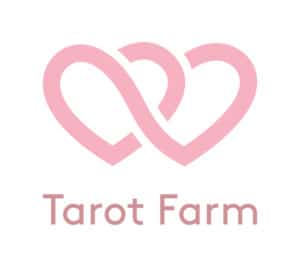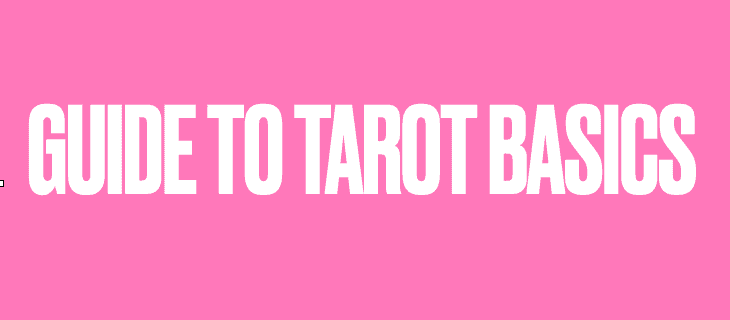
First, I want to say that I am so happy that your curiosity brought you here. By taking the first step to learn the tarot basics, you are about to enter a delightful journey that will give you so much. Whether you are looking to read tarot cards for yourself or others, Tarot will benefit your life in so many ways.
Tarot cards allow us to clarify our desires by showing us perspectives that we otherwise wouldn’t see. They help us solve practical problems by raising our consciousness level and assurance to trust our inner wisdom. How you will use this enlightenment will be up to you, but the possibilities are endless.
You can use the Tarot just to help yourself as you walk through the face of the earth, or you can use your knowledge to help others as well. If you keep an open mind and dedicate some time to these beautiful little cards, you might even be able to turn it into a profession that will pay for your bills. Reading tarot cards is a skill that you can practice anywhere you go in the World.
What is Tarot?
Tarot comes with many misconceptions. Many still see it as a thing of the hippies’ or think of a stereotypical scene where a dark-haired psychic woman reads fortunes and misfortunes in a candlelit room. But to many people’s surprise, the power of modern Tarot lies in helping us access our intuition and inner wisdom, instead of telling us our futures.
The Tarot origins are rooted in 15th century Italy, where the cards were initially used for a card game called Tarrochi. As the game gained popularity, it spread to other European countries like France, where they translated the name Tarrochi to Tarot.
In the late 18th century, The Tarot deck had developed into its current form of 78 cards, consisting of four 14 card suits and additional 22 Trump cards. Around the same time, some people started using the tarot deck in divinatory purposes. The first professional Tarot reader was Jean-Baptiste Alliette, known as “Eteilla“. He was the first to develop the cards’ divinatory meanings and the correspondences between the Tarot, astrology, and the four classical elements – water, air, fire, and earth. He also introduced the concepts of what later became known as Major and Minor Arcana – 22 trump cards – the Major Arcana and the remaining 56 suit cards – the minor arcana.
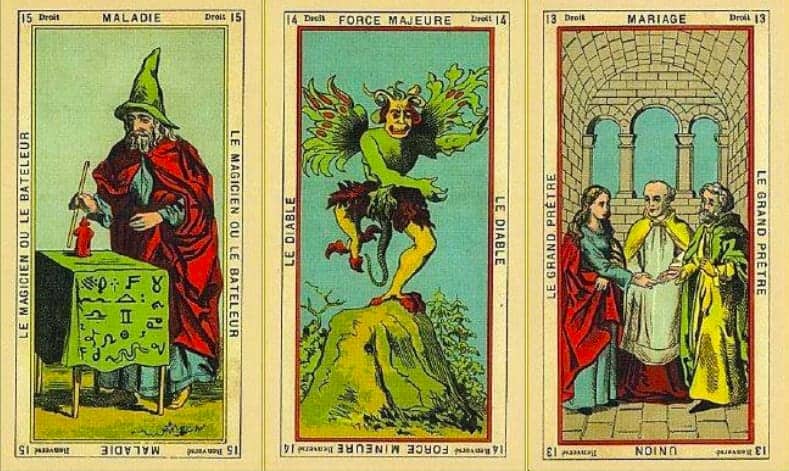
A little over 100 years later, in 1909, an American-born British poet Arthur Edward Waite, with illustrator Pamela Colman Smith, created the Rider-Waite Tarot deck. The divinatory meanings depicted on the Rider Waite deck were significantly based on the writings of the Hermetic Order of the Golden Dawn group, of which Arthur Waite belonged to. It was the first deck to illustrate all 78 cards when at the time, other decks had only included unique imagery for the 22 Major Arcana cards.
Tarot reading exploded in popularity in the 1960s and 1970s when Tarot readings became associated with the New Age movement. Over the past 30 years, tarot card reading has been increasingly applied to personal introspection and self-growth. And this is where we are now.
Today, we can use tarot cards as tools for our growth. And more importantly, they can change the direction of our lives. Tarot cards allow us to reflect on our present moment and see what prevents us from realizing our fullest potential.
Through a tarot reading, you can observe your current situation from different angles and bring out your inner knowledge. The cards allow us to see what action needs to be taken to get us where we want to be. Although the cards don’t expose the future to us, they give us valuable insight into our past, the present, and the future, based on our current path.
How does a Tarot reading work?
In case you have never experienced a tarot reading, let’s go ahead and summarize it. It involves a tarot reader who interprets the cards to a seeker who is looking for answers to some troubling area or issue in their life. The reading doesn’t always need two people, as the reader can also analyze the cards just for themselves. Reading for yourself is actually a great way to practice tarot readings.
It is good to understand that there are two different types of Tarot readings: question readings and open readings.
- Question readings focus on a specific question that is on the seeker’s mind. Maybe some challenges are troubling them, and they want to understand why this is happening and what they can do about it.
- Open readings focus on broader aspects of life rather than a particular problem area or question. Open readings usually cover a specific subject such as career or relationships, depending on what is essential to the seeker at that moment.
Before the reading starts, usually, the reader shuffles the tarot deck. While this is happening, the person receiving the reading should concentrate on the question or area they want guidance for. When intuition says they are ready, the seeker usually cuts the deck in half and place the cards face down on the table.
When the actual reading starts, the reader uses the cards combined with a tarot spread to interpret the Tarot’s message. Tarot spreads give the reading a structure in which the reader can explore the seeker’s questions. Each position in the spread reflects an aspect of the seeker’s question to consider.
When the cards are revealed, the tarot reader looks at the cards and tries to interpret them. More experienced readers likely remember the meanings for each card. Still, it is not necessary to memorize them by heart to get started in Tarot. Tarot cards hold numerous clues to their intentions in the card imagery, which already gives the reader hints on what they could mean. Some of the things that the reader can look for are:
- Numbers
- Symbols
- Colors
- Facial expressions
- Characters
- interactions and
- Other elements that set the mood in each card
As a tarot beginner, although the card imagery gives away many details, you’ll most likely need some reference to help you along with the cards. There are many tarot-card-meaning cheat sheets available online, and usually, there is a “little white book” that comes with the tarot deck that you can use.
After the reader has gotten a sense of what the cards are telling, the reader then turns that message into a narrative based on the seeker’s question. It can be challenging initially, but as you gain more experience, the storytelling becomes more natural. You will learn to trust your intuition. A significant part of tarot reading is interpreting a random selection of events and giving them meanings based on your intuition.
Whichever type of tarot reading occurs, the desired outcome is that the seeker feels more confident about the choices they need to make to resolve their issue. The message is not always what they expected, but the good news is that the Tarot’s message is not set in stone. The seeker can observe how the message resonates with their personal preferences. They always have the power to change their reading outcome with the actions they choose to take.
Getting started with Tarot as a beginner?
As I already mentioned, you don’t have to possess psychic abilities to do Tarot readings. Everyone who can absorb new information and is motivated to know more can learn to read tarot cards. You can take it on as a new hobby and even as a profession if you stay with it.
When you start your tarot journey, there is a couple of good to know things. The first will save you a lot of time and prevent you from exhausting yourself. That is to understand that the Tarot is more about empowering your intuition than memorizing every meaning and symbol of each tarot card.
The second is that there are no rights and wrongs in Tarot. If your gut is telling you that something feels right, then that’s the way you should do it. Don’t worry too much about whether you are shuffling the deck precisely right or interpreting the reversed tarot cards in a certain way. There is nobody that can tell you the exact science of Tarot.
But to get you started, the first thing you will need is a tarot deck.
Step 1. Buy a Tarot deck
You may have heard rumors that the first tarot deck needs to be gifted, or you can’t buy a used tarot deck. In my opinion, these are just silly misconceptions and superstitions that root themselves to a time when tarot reading was not accepted as a hobby or let alone speak a profession. So go ahead and toss these ideas out of the way and go out and get yourself a tarot deck.
There are a few things you will want to consider when you are buying your first tarot deck. It seems like there are about a million different decks available these days, so it might be a bit overwhelming when you start browsing for your first cards. So here are some pointers to take into consideration when you start looking:
- Tarot deck types: Several types of tarot decks are used for esoteric purposes. The three most common ones are The Rider Waite Smith Tarot, Tarot of Marseille, and the Thoth Tarot. You can go with any of them, but most of the tarot meaning resources are based on the Rider Waite Smith Tarot.
- The Card imagery: As a beginner, it will be easier when the cards give away details of their meanings through the illustrations. The Rider Waite deck imagery is explicit and narrative-based, so here I would root again towards them.
- The Card size: Some tarot cards come in enormous formats so make sure you know what you are getting. The “giant” decks are great at displaying every little detail of the card as they have a large canvas. The downside is that they are quite difficult to carry and handle.
- The quality of the card stock: Check the reviews about the card stock quality. Some decks tend to wear off quite quickly due to the cheap material that has been used for the cards. Tarot decks are not incredibly expensive, but it is not pleasant to see a newly purchased deck being worn down in weeks or months. So check the reviews about quality.
- Your intuition: Finally, weigh in how each deck appeals to you. Take into consideration all the things I just mentioned, but in the end, trust your intuition, and go with the deck that feels right for you.
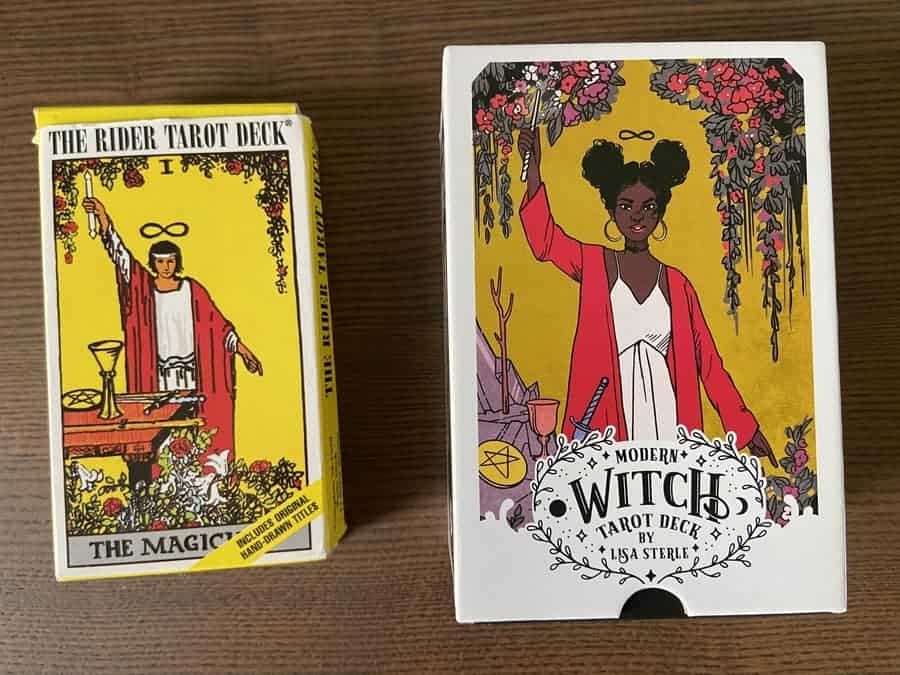
Due to the illustrations’ narrative nature and the resources available online, my recommendation would be a deck based on the Rider Waite imagery. The Rider Tarot deck is the most popular deck in the world, but there are also options available that base their illustrations on the Rider Waite, like the Modern Witch Tarot Deck. It is a high-quality deck that I really like.
Step 2. Learn the structure of the Tarot deck
After you have gotten yourself a tarot deck, you are ready to start learning the tarot basics. The Tarot Cards are a deck of 78 cards, which all have unique meanings. Before you begin practicing tarot readings, it is good to familiarize yourself with the tarot deck. You don’t need to know each card by heart, it is not essential, but it is good to be familiar with Major and Minor arcana concepts.
When you understand them, it will be easier to empower your intuition, which will be the most essential tool when doing tarot readings. So let’s take a look at both arcanas individually.
Major Arcana
The major arcana is a set of 22 cards. Each card in the major arcana represents the spiritual stages and more significant life lessons we encounter during our lives. These lessons are universal to us all on our path to completion and enlightenment.
When you encounter them in a tarot reading, something important is either being released, some sift is taking place, or something new is coming up. As they represent more significant lessons, they also often take more time to realize.
It helps to understand the major arcana if you look at it as a sequential and symbolic story that the Fool goes through on his way to enlightenment. This story can be divided into stages that are not immediately evident when just browsing the cards.
So The Fool is a card numbered “0,” and he stands in the beginning. The 21 archetypal stages and life lessons can be divided into three phases.
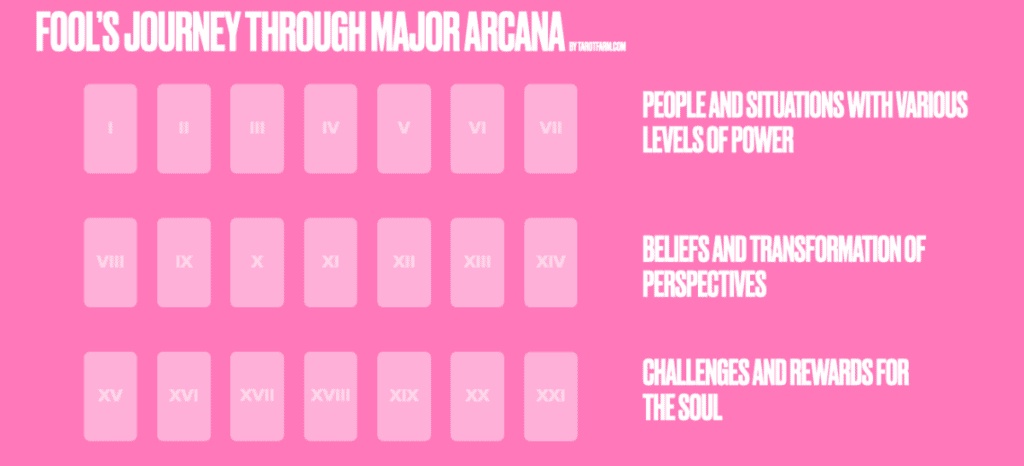
- The first seven cards that the Fool encounters are people and situations with various levels of power. He learns what it means to possess power. How to abuse it or how to benefit the World by using it wisely.
- The next seven cards he encounters are characteristics of beliefs and transformation of perspectives. He learns about change in feelings, views, and thoughts. Here he realizes who he really is.
- The last seven cards display the challenges and rewards the soul needs to become full. Here the Fool learns about spirituality and about things that go beyond self-improvement. This is where he gets closer to completion by learning life’s karmic lessons.
This method helps place yourself on the Fool’s shoes and reflect on different situations and lessons from your own life.
Minor Arcana
The remaining 56 cards are the Minor Arcana. They give us insight into our challenges, opportunities, and experience of ups and downs that we encounter in our everyday life.
While Major Arcana cards can show us the overall energy of a particular situation, the Minor Arcana cards have a temporary influence on our lives. They represent an energy that is passing us right now, and they give us detail and guidance on what actions to take at this moment to reach our goals. Their impact can easily be changed if we prefer so. It just depends on the course of action we decide to take.
The Minor Arcana has a similar structure as a traditional playing card deck, and therefore it includes four suits. But instead of the classic suits of the playing cards, the suits in the Minor Arcana are Cups, Pentacles, Swords, and Wands. The cards within each suit are numbered one through 10, plus four court cards — the page, the knight, the queen, and the king.
Learning 56 cards might seem daunting, but luckily some explanatory concepts will help with their meanings. Each suit relates to one of the classic elements and has meaning regarding a specific approach to life.
The Suit of Cups
Cups’ suit focuses on emotions and emphasizes your feelings over logical thinking and spirituality over materialistic needs. In a tarot reading, their meanings often are associated with emotions, relationships, connection, and how you react towards others and your environment.
The Suit of Cups is related to the element of Water. It is a feminine energy that is purifying, flowing, and adaptable. It can be gentle, like a stream crossing a flowery meadow, or fierce as an apocalyptic tsunami.
The Suit of Pentacles
Suit of Pentacles is associated with life’s materialistic aspects, focusing on work, career, and finances. Also, they can signify prosperity related to relationships, spiritual contentment, and self-image. In a tarot reading, their meanings often point to practicality, career-mindedness, and financial aspects of our lives.
Pentacles are related to the element of earth. Earth is a feminine element, which means it is fertile and allows growth and production. It promotes prosperity. Earth is the foundation that everything is built on.
The Suit of Swords
The Suit of Swords highlights thinking and logic. Tarot card meanings are associated with rational thought, action and truth. When Swords appear in a tarot reading, it suggests that strategic thinking and action is needed in matters related to communication and sometimes conflict.
Swords are related to the element of Air. It is a masculine element, and it is refreshing and cleansing. It can be gentle like a summer breeze and fierce like a tornado. It represents energy, force, and power, even though it remains unseen.
The Suit of Wands
The Suit of Wands encourages us to stay true to the things that make us tick. Leadership, self-growth, and general optimism are some traits of this suit. They often represent the seeker’s creativity and indicate inspiration, creative endeavors, and physical action, which sometimes can mean travel. When wands show up in a reading, it suggests that action is about to be taken, and change is forthcoming.
Wands are Related to Fire: Fire is a masculine element full of action, ambition, unpredictability, and closely associated passion and sexuality. It is an active element, causing permanent change if not controlled. When in control, it can bring safety and comfort to one’s life.
Step 3 – Learn to make questions to Tarot
Now that we have learned about the structure of the tarot deck and are familiar with Major and Minor arcana concepts, we can start pulling cards and interpreting them. It is nice to present questions to Tarot and interpret the meaning concerning the problem.
You can ask the Tarot what you want, but there are some things to point out. The power of a Tarot reading lies in exposing us to something that we already know but are unable or unwilling to see at that time. To gain insight and perspective on the problems we seek answers to, the questions we present Tarot should be open, something we are able to influence and about the present.
- Keep the questions Open – Questions that allow some details to be given offer more value to the seeker than questions with a yes and no outcome.
- Keep Questions on a subject that the seeker has influence over – When asking questions about things or someone that they have no power over will not be beneficial for the seeker.
- Keep the questions focused on the present – We cannot change the past, so there is no point in focusing the questions there. This doesn’t mean that we can’t observe our history to learn about the present. The outcome can guide the actions to take so that the future will be as desired.
It is good to practice by pulling one card initially, but when you want to make things a bit more interesting, you can start using a tarot spread.
Step 4 – Learn a basic tarot spread
As already mentioned, a spread gives the reading its structure to explore the seeker’s questions. There are tons of different spreads and some of them can be really fancy yet complicated. Therefore it is good to start off with an easy one.
One of the most straightforward Tarot spreads to use in a reading is the past, present, future spread. It is a great tarot spread because it is easy to use, and it gives excellent insight no matter what level reader you are.
When using the past, present, and future spread, the reader places three cards from the top of the deck on the table and flips them from the side to reveal the cards.
- The card on the left is representing the past: The people, energies, and experiences from the past are affecting the situation
- The card in the middle is representing the present: What the seeker should realize about the issue at this moment.
- The card on the right is representing the future: In which direction are things moving if the seeker continues on this path.
When you start with a simple spread like this, you can practice how you put the message together. You’ll soon be able to have a narrative in your readings, and eventually, you can move on to more advanced spreads like the Celtic Cross.
Step 5 – Practice, Practice, Practice reading tarot cards
Over time and through practice, you’ll learn to trust your intuition and be more confident in giving readings. You will notice more and more details in the tarot structure and how things associate between the suits, numbers, and the different cour cards. You will also be able to see the storyline of the major arcana more clearly. You will begin to connect with the cards and their meanings on a deeper level, which means you will have an association with them. This allows you to remember the cards and interpret their meanings to an issue that the seeker has.
Start you Tarot journey!
I hope this article gave you a spark to start learning the Tarot. I also hope that it gave you the will and belief that anyone can learn to read Tarot. Therefore, I wanted to make this introduction to the tarot basics as understandable as possible. I also hope that the other information here at TarotFarm can help you get more in-depth into the Tarot World.
Tarot cards allow us to bring out and trust our inner wisdom, raise understanding, and thereby help us solve practical problems in our lives. You can use it for self-development, clarifying goals, making decisions, helping others – the possibilities are numerous.
